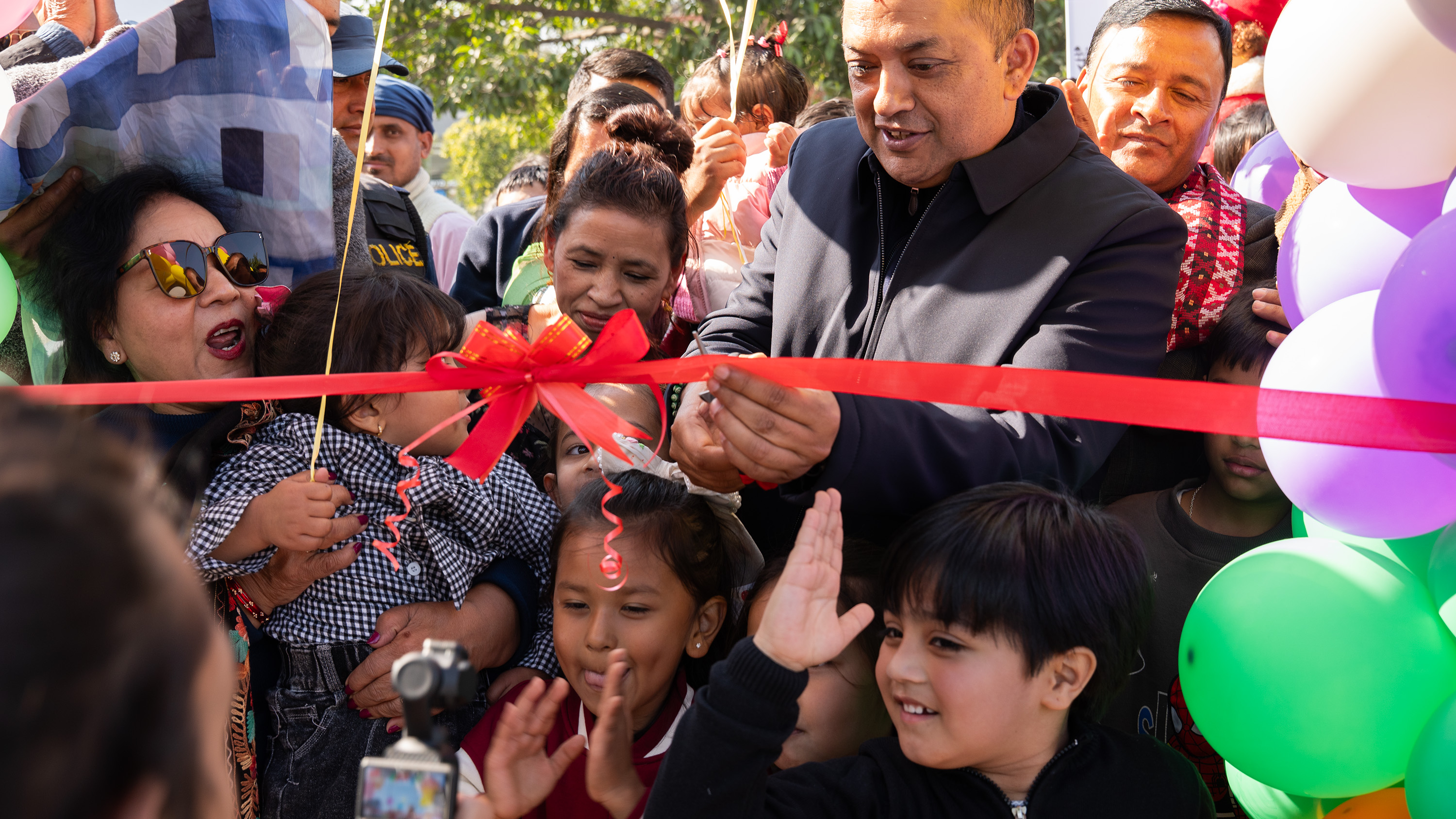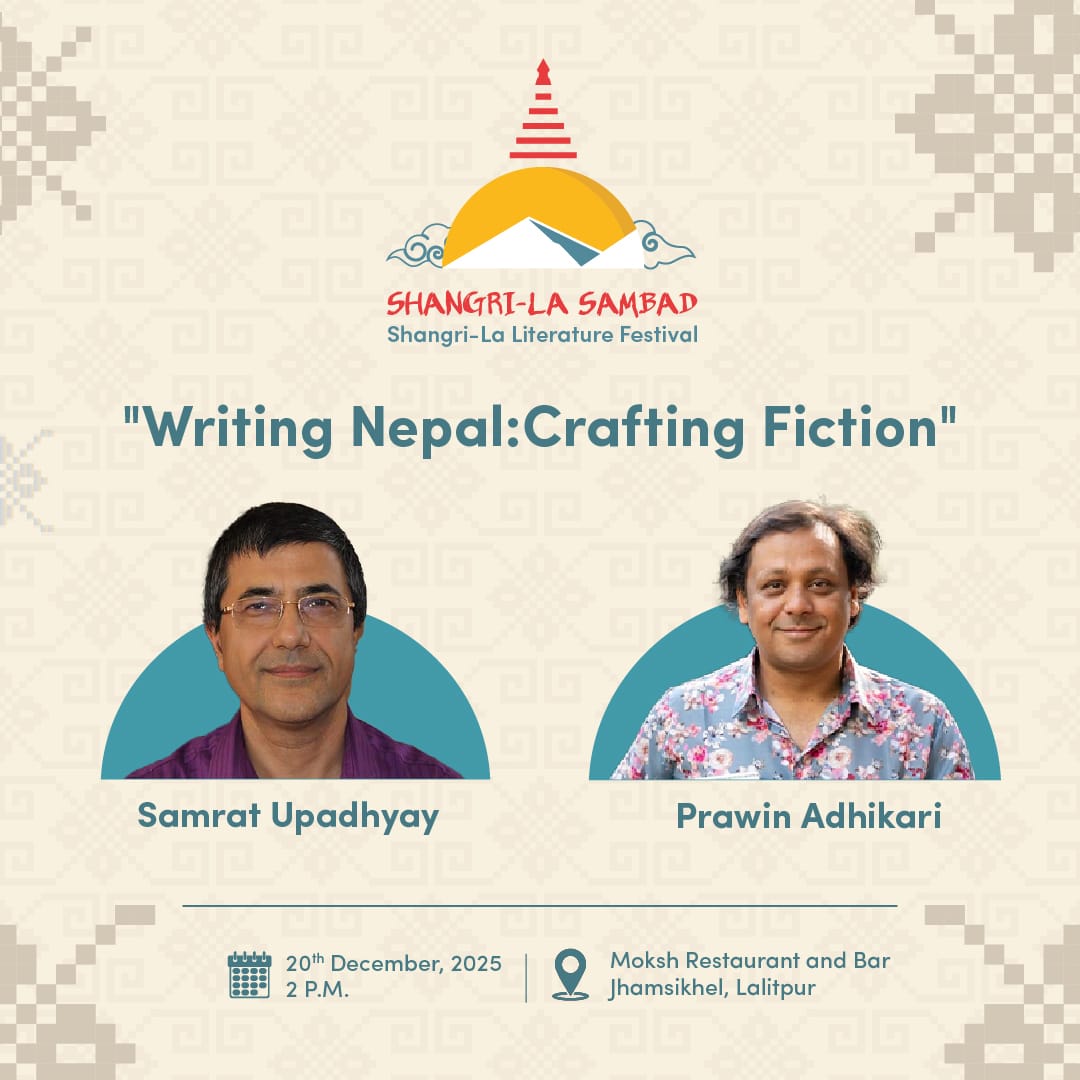Culture & Lifestyle
How Indra Jatra came to be one of Kathmandu's most celebrated festivals
As festivities have been halted this year because of the pandemic, the Post takes a look at the history of the Newa festival and the many legends that surround it.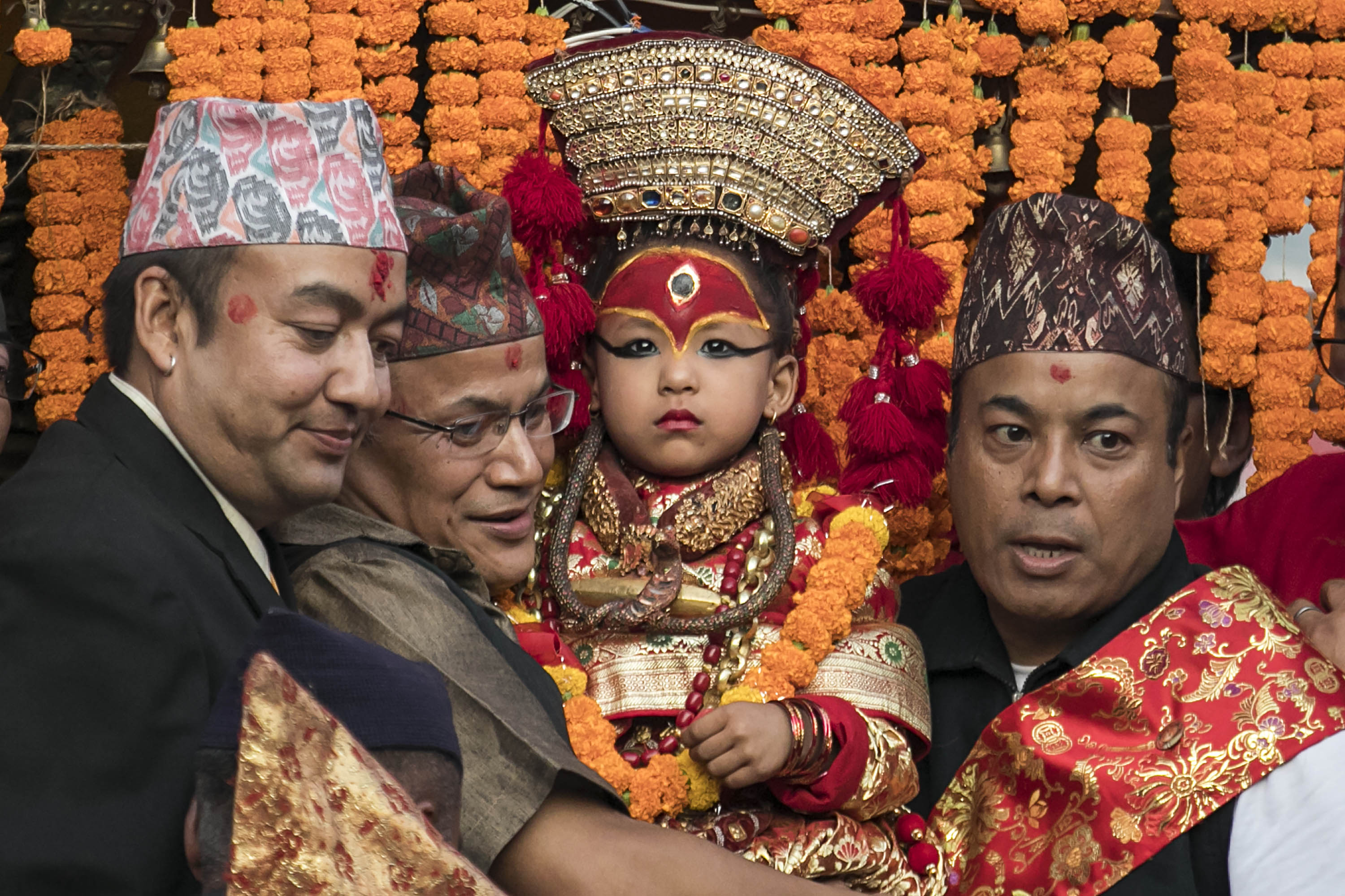
Ankit Khadgi
For the Newa people of Kathmandu, Yenya, also known as Indra Jatra, is their biggest festival. In the eight days the festival is observed, streets and temples in the heart of old Kathmandu are lined with samaya bajis, which are later devoured by the locals. Masked dances, representing various deities and demons, are performed in the vicinity of old Newa settlements, which also witness three chariots--of Kumari, Bhairav, and Ganesh--parading on the streets, with people pulling the chariots with much excitement and fervour.
“Yenya is a multi-faceted celebration, having cultural, religious, and social significance in Newa culture, which sees the involvement of every Newa caste group,” says Chunda Bajracharya, a culture expert.
This year, however, for the first time in history, the streets of Ye (Kathmandu) will not come alive. The procession of the Kumari’s chariot should have started with Indra Jatra, which falls today. But because of the pandemic, Yenya, along with all festivals, has been called off by the government due to health concerns. An eerie quiet hangs in the air.
To mark the festival, the Post deep-dives into the many tales surrounding the origin of the festival, how it has evolved over the years and its significance in Newa society.
Tracing the festival’s origin
As diverse as the Valley's cultures are, so are the tales of origin of Indra Jatra, its grandest festival. “There are many accepted versions attached to the origin of Indra Jatra, each having its own significance and logic,” says Bajracharya.
But the most common, and most accepted, story is the one in which Lord Indra himself came to Nepal Mandala (the old name of Kathmandu Valley). It is believed that Indra came in search of parijat, a flower which his mother, Vasundhara, needed to perform a puja with. Disguised in human form, he was captured for stealing the flowers in a garden in Maru tole, leading the locals to arrest and parade him in the centre of the town, with his hands tied.
According to Gautam Ratna Shakya, chair of Indra Jatra Byawasthapam Samittee, the whole festival is a reenactment of this very tale. Indra was then later rescued by his mother, who promised the locals that their farms would receive enough dew in the coming winters in exchange for Indra.
But Bajracharya believes that Indra Jatra existed even during the Vedic period. “The celebration of Indra Jatra and the erection of Ya Sin:, which is a pole erected on Bhadra Shukla Dwadashi that marks the beginning of the festival, is also mentioned in the Natyashastra,” says Bajracharya. The Natyashastra is a Sanskrit text dating back to between 200 BCE and 200 CE.
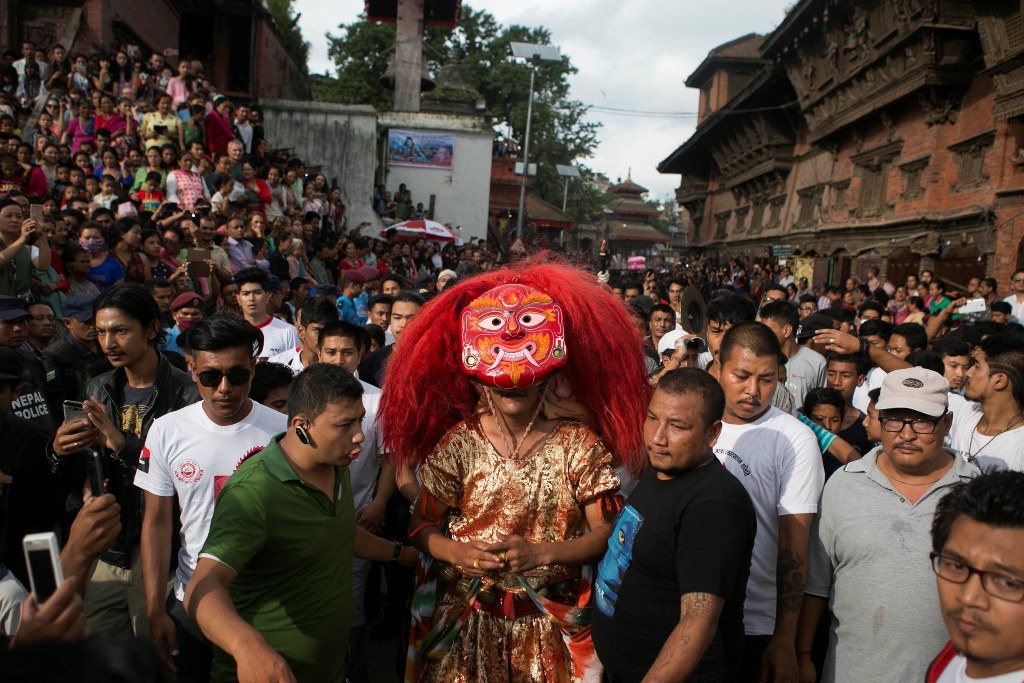
Indra Jatra is also believed to have been started in the 10th century, during the reign of Gunakama Deva, who, according to Bajracharya, also started the trend of Lakhey and Pulu Kishi Pyakhan (dance) during the Jatra. Subarna Shakya believes that Gunakamadeva also built 12 idols of Bhairav, with the Akash Bhairav in the middle, leading to the demarcation of Kathmandu’s geography back then and also establishing the tradition of worshiping Bhairav during Indra Jatra.
The festival’s significance
While many scholars and priests commonly accept the religious tales of Indra’s arrival in Nepal Mandala, leading to the celebration of Indra Jatra, heritage conservation activist Alok Siddhi Tuladhar argues that the festival has a deeper meaning attached to the culture and traditions of Newa society--worshipping nature and ancestors.
Although not as popular as Kathmandu’s jatra, Bhaktapur also celebrates Indra Jatra for eight days, with its own unique traditions and practises, among which the figure of keeping bukhyacha, scarecrow in various places is common. According to Tuladhar, the use of figurines like a scarecrow supports the theory that Newa society, which initially was agrarian, celebrated the festival to mark the change of the season as well as highlight the importance and value of fertile land since scarecrows from time immemorial has been used in fields.
“The association of Indra with the festival started after Hinduism flourished in the country. Otherwise, the festival has a deep connection with the culture of worshipping nature,” says Tuladhar.
Sanskritist, art historian and scholar Gautama Vajracharya also agrees with the theory that Indra Jatra was celebrated since pre-Hindu times and calls it a festival originated to pay honour to nature as well as ancestors. “The Newars did not have the concept of god before they came in contact with Sanskrit-speaking people and their literature. They worshipped their ancestors as supernatural beings, hence they joined the name Indra with aju, ancestor/grandfather, forming Indra aju, grandfather Indra,” writes Vajracharya in Nepalese Seasons: Rain and Rituals, giving reason to why Newa people refer to Indra as Indra aju.
“Aju Dya (Akash Bhairav) means the divine ancestor, the sky-god responsible for making seasonal rain. The autumn festival is a thanksgiving rite in honour of the ancestral sky god,” he writes in his book.
According to Abhas Rajopadhyaya, an anthropologist, Indra Jatra is a festival that extensively symbolises the changes that have taken place in the Valley over thousands of years with the change in rule of power. “From people praying to Indra and then to Bhairav and the addition of Kumari, all of these elements represent the changes that took place in Newa society,” says Rajopadhyaya, who’s also a priest.
One of the biggest changes that has been traced in the celebration of Indra Jatra is the day when Ya sin: is erected. During the first day of Indra Jatra, Ya Sin: Thanegu, in Nepalbhasa (or Indra Dhwaja Rohan in Nepali), a wooden log made from a tree located in Nala, Bhaktapur, is brought and erected in the premises of Hanuman Dhoka. The tradition of bringing and pulling the log is carried out by Sayamis or Manandhars and the ceremonial pole is erected at an auspicious time with pooja and fanfare along with shots of gunfire.
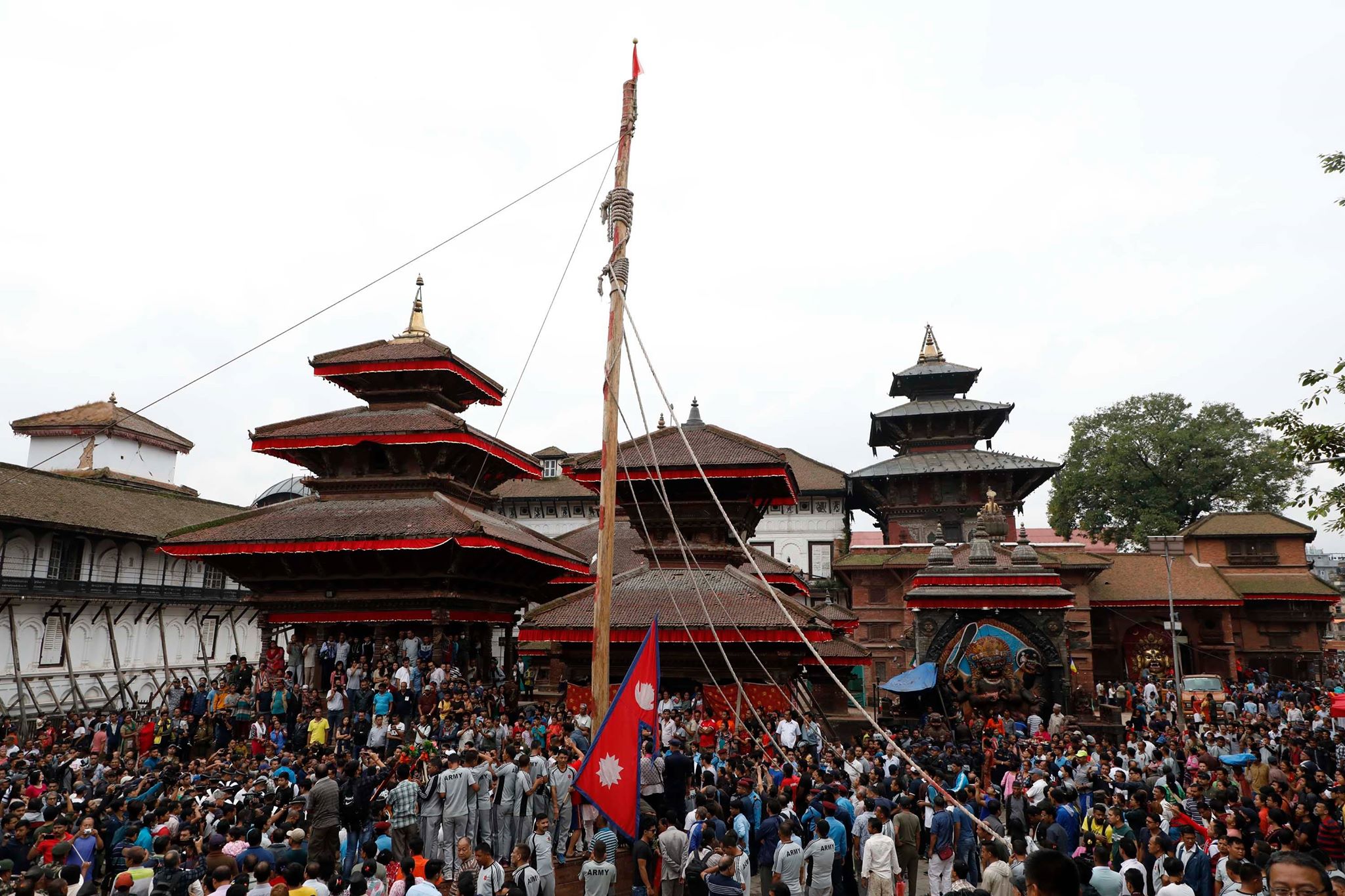
However, Rajopadhyaya says that for centuries the pole was erected on Bhadra Shukla Dwadashi, the 12th day of the Nepali calendar. To back Rajopadhyaya’s claim, French ethnologist, Gerard Toffin says that there is evidence that supports that it was only during the reign of Pratap Singh Shah, in the 18th century, that the pole-erecting ceremony was celebrated on Bhadra Shukla Dwadashi. Before that, it used to be observed a day earlier.
According to Subarna Shakya, a cultural expert and a social worker, it was also during the reign of Pratap Malla that the tradition of celebrating Ya Sin: Thanegu with fervour and grand manner started. “While it’s mentioned in the Rig Veda that the tradition of hoisting the flag in Indra’s name was auspicious, here the tradition became big only after Pratap Malla introduced the tradition of hoisting the flag in the premises of Basantapur Durbar Square,” says Subarna Shakya.
Another significant change is the inclusion of Kumari Jatra, the procession of the Living Goddess, which is said to be started by the last Malla king of Kathmandu, Jayaprakash Malla. According to Bajracharya, while the tradition of worshipping Kumari started a long way back, it was Jayaprakash Malla, who built the Kumari house, and included Kumari’s procession in Indra Jatra, which was later followed by the inclusion of the procession of Bhairav and Ganesh.
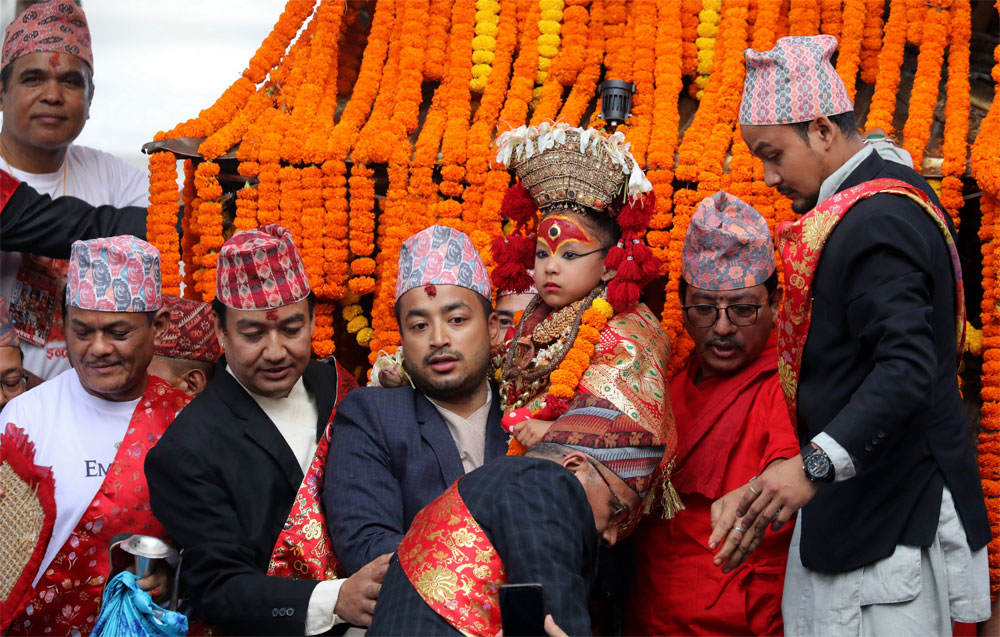
Researcher Prerna Pradhan says the inclusion of Kumari Jatra in Indra Jatra was more of a political move than a religious one, made by Jayaprakash Malla to legitimise his power. During his reign, it is believed that Malla was struggling to keep power, as both neighboring kings had their eyes on Kathmandu and so did Gorkha’s Prithivi Narayan Shah, who had already made efforts to invade the valley.
“The Kumari Jatra played a very crucial role to establish his territory and gain favour in the eyes of his subjects. It was his way of claiming that space where he could perform the role of both a devotee and the king of the valley,” writes Pradhan in her research paper titled Sacred Space, Spectacle and Being Visible: Exploring the Indra Jatra Festival of Kathmandu.
While Indra Jatra is held with high religious regard, it also marks a significant day in the history of Nepal Mandala, as in 1768 during Indra Jatra, Prithivi Narayan Shah attacked Kathmandu, later annexing it.
“The king (Jayaprakash Malla) was busy pulling Kumari’s chariot. In the meantime, Prithivi Narayan Shah with his army attacked Kathmandu and sat on the throne,” says Subarna Shakya. “Jayaprakash Malla then ran away to Patan and then the Shahs’ rule formally began in Kathmandu, which later led to the formation of present-day Nepal,” he says.
Although cultural experts and anthropologists say that the Shah dynasty respected the traditions of Indra Jatra and didn’t interfere much, as they wanted to legitimise their power and threshold among the inhabitants of Kathmandu, many significant changes did, however, take place after the Shahs took over the Valley.
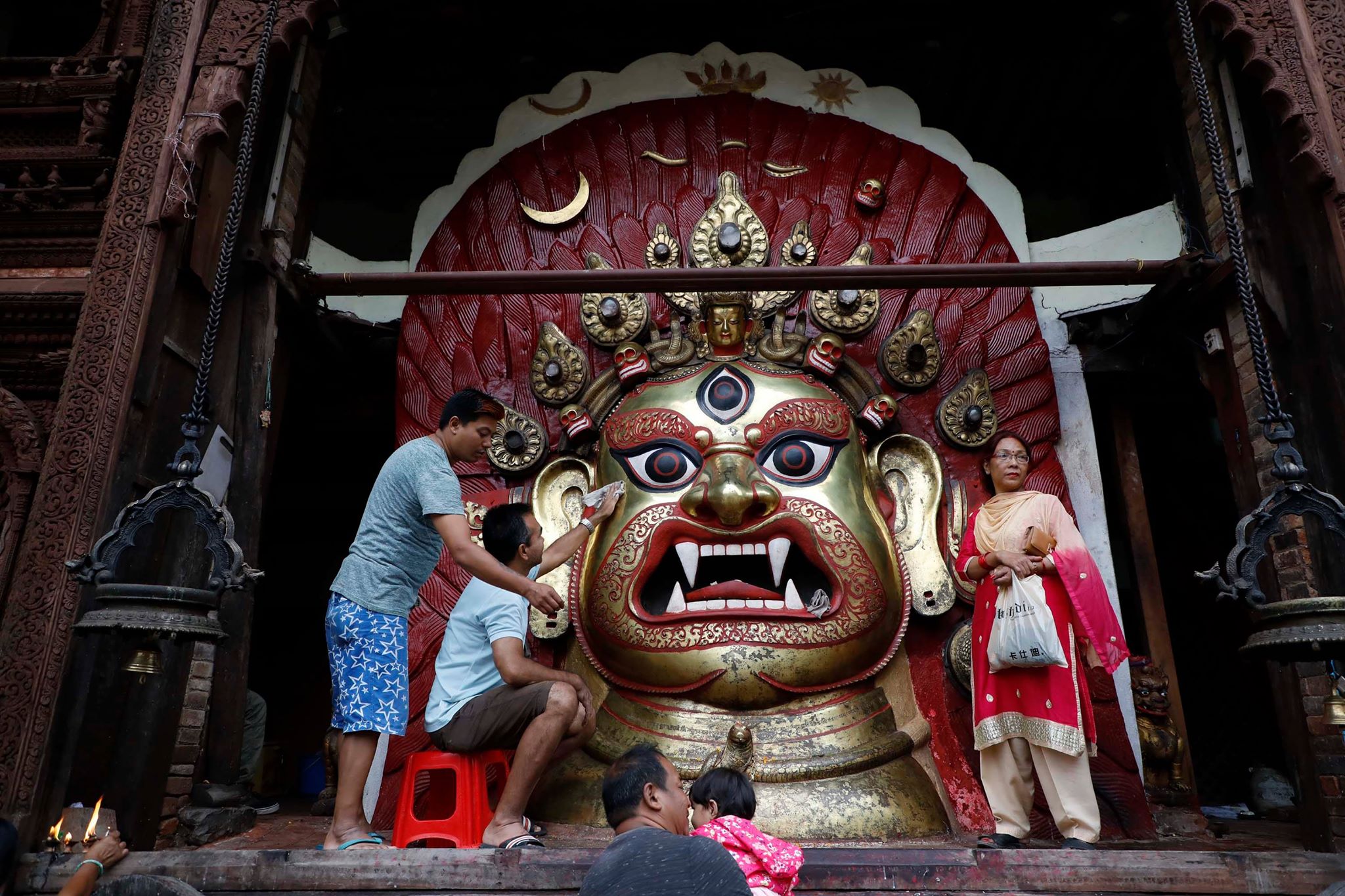
In his essay, The Indra Jatra of Kathmandu as a Royal festival: Past and Present, Gerard Toffin notes that after the Shah invasion, many of the rituals started including Parbatiya Brahmin pujaris, which in the past were performed by Newa people. Likewise, it’s also believed that the tradition of worshipping Swet Bhairav, a large idol of Bhairav, which except in Chaitra Dashain and Indra Jatra isn’t displayed for the public, started only after Rana Bahadur Shah built it.
Similarly, many cultural experts also believe that some of the traditions that take place during Indra Jatra are also a result of the enactment of the Shah invasion. For instance, in Hyumata, near Basantapur, lights are placed in a wheel-like structure and then the wheel is moved, which according to Tuladhar is a reenactment of an event that took place during the Shah invasion.
“When Prithivi Narayan Shah attacked Kathmandu, Jayaprakash Malla took refuge in Patan. It is believed that while the King was away, the people of Hyumata had assured him that they would move the lights until it was safe for him to return,” says Tuladhar. “In Nepalbhasa, ‘hyu’ means moving and ‘mata’ means lights. That’s how the place got its name, and the people are still following the tradition of moving the lights in a wheel-like structure as a way of enacting the old history,” he says.
How recent changes have affected the festival
With the end of the Shah dynasty, there was a big debate surrounding Indra Jatra, and other major festivals. In 2008, after Nepal became a secular and republic state, the then Finance Minister Baburam Bhattarai announced the national budget on the eve of Indra Jatra. The budget included less government funding and subsidy to Hindu festivals, staying that the state would no longer give priority to a particular religion.
Hundreds of people took to the streets, protesting the government’s decision, which was the only time, according to Gautam Ratna Shakya, the festival had faced some obstructions in its history.
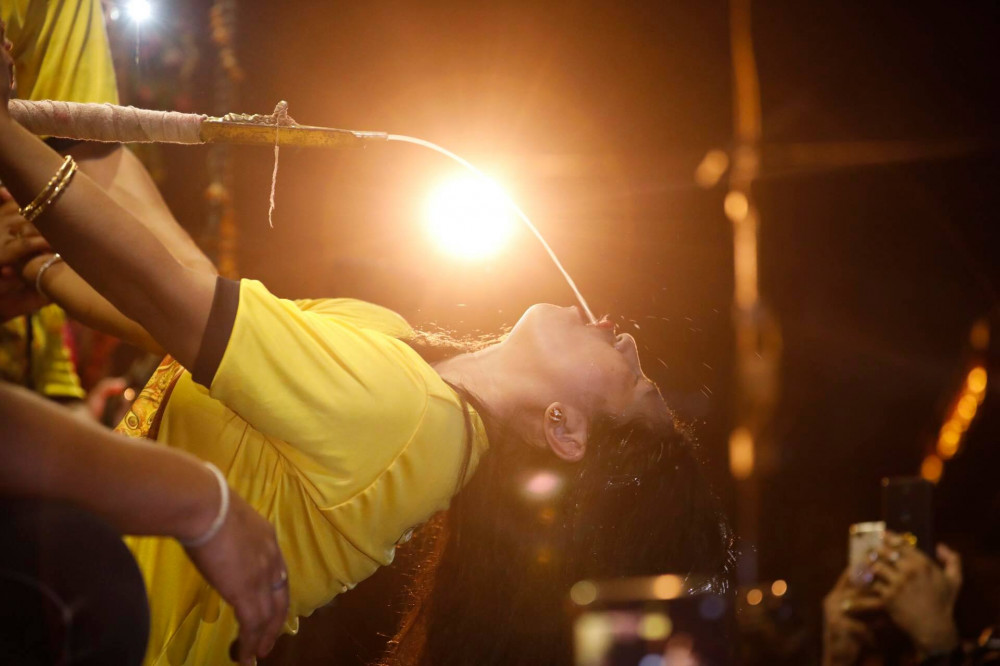
The government later agreed to all the demands, and with guthis and organising committee’s leadership the fervour and grandeur of Indra Jatra remained intact. Since then, new additions have been made that have tried to make the celebrations more gender-friendly: in 2012, it was announced that women could also pull the chariot of Kumari and drink rice wine, prasad of Swet Bhairava, which before 2015 was only limited to men, says Gautam Ratna Shakya.
Last year, Kathmandu’s mayor Bidya Ratna Shakya had also invited representatives of different nations to participate in the festival with the intent to increase visibility of the Jatra as part of the Visit Nepal Year 2020 campaign.
But as the festival has been called off because of the pandemic, according to Gautam Ratna Shakya, only necessary puja will be conducted this year. “We are only doing the puja and rituals that should be carried out. Likewise, we are also doing a kshama puja, with a hope that the pandemic will soon end and we will be able to conduct Indra Jatra like before,” he adds.
While the pandemic has stopped Indra Jatra from taking place this year, for Newa people, the festival symbolises a unity that has existed for as long as they can remember, says Rajopadhyaya, a feeling they need to hold onto at a difficult time like this. “Indra Jatra not only symbolises the unity of Newa people, as everyone participates in the celebrations, it also signifies the multiplicity and the plurality of culture within the Newa community,” he says.




 11.12°C Kathmandu
11.12°C Kathmandu


.jpg)

